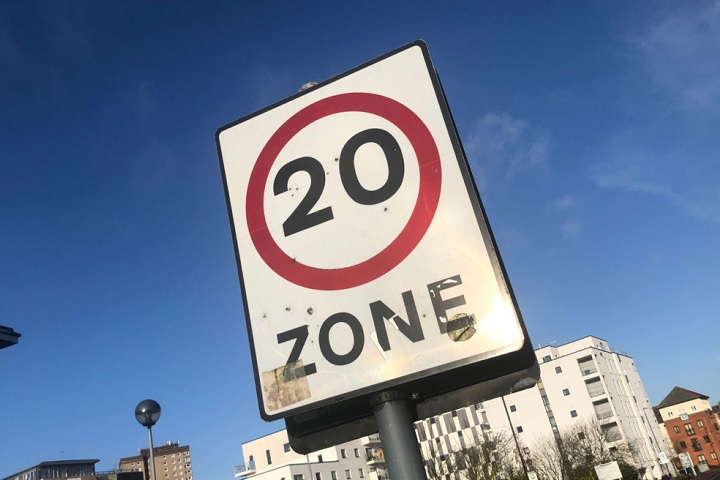
Slower driving speeds, increased levels of walking and cycling and minimal impact on journey times are among the key findings of a new report carried out in areas of Wales trialling the nation’s new default 20mph speed limit.
The interim monitoring report uses data gathered from the eight pilot areas, which introduced 20mph limits between June 2021 and May 2022.
The report finds that, on average, motorists are already driving slower in these areas, with an average speed reduction of 3mph recorded across all eight communities.
It says ‘substantial behaviour change’ has been observed in St Brides Major and St Dogmaels (two of the first phase areas to be introduced) where the number of people driving at or below 24mph has increased from 23% to 45% and from 54% to 84% respectively.
In terms of journey times, the report shows that during morning and afternoon peak periods (7-9am & 4-6pm) mean journey time increases ‘are minimal and generally not more than one minute’.
The report also concludes that there has been more children walking, cycling, and scooting to school.
Using data from Living Streets’ Wow walk to school challenge, it reported that schools in 20mph areas have seen a greater increase in active travel journeys (49% to 74%), compared to schools predominantly in 30mph areas (49% to 67%).
Lee Waters, deputy minister for climate change, with a responsibility for transport, said: “This latest data is already showing the benefits we can expect to see across Wales thanks to the bold move we are taking to lower the default speed limits later this year.
“Decisions like this can be unpopular and we know that change is never easy, however, evidence from around the world is clear – reducing speed limits saves lives.
“We have made progress on reducing deaths and serious injuries on our roads over the 21 years of devolution, but we still need to do more to make the communities we work and live in safer.
“A reduction to 20mph on our residential and other busy pedestrian urban roads has to be the way forward.”
On 17 September 2023, the Welsh Government will introduce a default 20mph speed limit on restricted roads across Wales.
Restricted roads include where streetlights are placed no more than 200 yards apart and are usually located in residential and built-up areas with high pedestrian activity.
The move will see Wales become the first UK nation to introduce a lower speed limit following in the footsteps of European countries, such as Spain, where 30km/h (18.5mph) is already in place.
20 mph has a role to play on roads around schools and double parked side streets but the application of this measure across the board based on spurious statistical analysis is just a road safety ‘fishing exercise’. There are unintended consequences in applying blanket introductions rather than as a targeted measure introduced based on a valid safety risk assessment. Alienating a large proportion of the motoring public by making them drive like a funeral procession down wide empty roads where the current limits are quite adequate if adhered to, will not help to engage them in the safety process, something we should be actively seeking to do.
Derek Cozens, Hertfordshire
--23
“…where the number of people driving at or below 24mph has increased from 23% to 45% and from 54% to 84%…”. “24mph”? Shouldn’t that read ’20mph’?
Hugh Jones, Wirral, Cheshire
--1
“Using data from Living Streets’ Wow walk to school challenge, it reported that schools in 20mph areas have seen a greater increase in active travel journeys (49% to 74%), compared to schools predominantly in 30mph areas (49% to 67%).”
So we’ve had a massive increase in “active travel journeys” even without reducing speed limits … interesting, but what are the numbers hiding behind the percentages, in the first place? As this seems to be a Welsh government document, perhaps one needs to be careful …
Fraser Andrew, STIRLING
--12